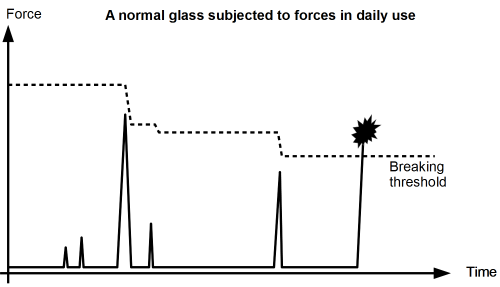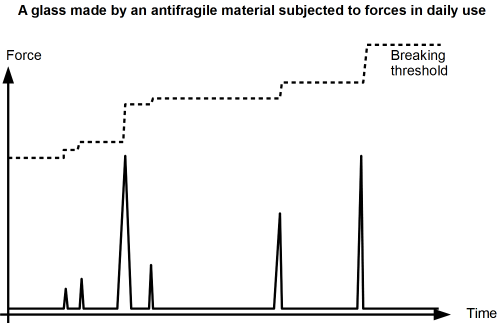Robert F. Pirsigs “Zen and the Art of Motorcyle Maintenance” is a classic about the authors’ motorcycle trip across North America with his son and two friends. It is also, however a philosophical dissertation about quality.
The trip through the changing landscapes during which he experiences and rediscovers himself, and heals his relation to his son is a strong and fascinating story. I’m an avid cyclist and I can deeply relate to the value of riding through landscapes, and letting the changing landscapes shape both thinking and reflection. This part of the book has a function too, however, as it serves as underpinnings for his dissertation. The book is fascinating and beautiful.
The motorcycle plays an important role in the book being a piece of technology that requires constant care and maintenance. But the motorcylce is also a medium.
Thanks to technology, we can experience ourselves in new ways. It’s fair to say that technology extends us. Pirsig rides and maintains his motorcycle, but the motorcycle also physically drives his thoughts and reflections, and eventually helps him heal himself. The motorcycle is thus both an object which Pirsig is working with, and a subject working back on him.
Pirsig identify two different views on things like motorcycles: First is the classic view, rooted in Socratic thinking, where things are understood by their components and individual elements. Second is a romantic view where the emotions and experiences are allowed to stand alone.
Through the first view on things the motorcycle can be maintained and tuned, the trip can be planned and executed, and the relation to his son and himself can be explored. But it is only through the second view that he can really understand what the motorcycle, landscape, and relations are in themselves. The two views are complementary.
Technology has evolved since Pirsig published his book 46 years ago. Both in the classic and romantic views modern information technology extends and affects us in ways that technology could’nt in the 60’s. Also, modern information technology is highly dynamic. While a motorcycle is a machine requiring materials and tools, and it takes time to perform even the simplest maintainenance job, a software system is pure design and can be changed in a moment.
People (like myself) working with software and IT systems often talk about quality as something that is built in: Cast in metal. Welded or painted on. Written in the code. Configured.
It’s not totally wrong, of course, but it reflects a purely classical view where technology is understood by breaking it down and analyzing it, and we assume that’s it: Once we’ve assembled the components, the job is over. This view is wrong. Systems theory, for example, teaches us that: Quality, in systems theory, is an emergent property.
Pirsig starts out personally favoring the classic perspective, but as he drives through the landscape he understands there’s also the alternative romantic view, and that it is just as valid. This, I think, is what leads him to start searching for a joining factor between the two perspectives.
Quality is an event in which the subject realizes the object, he says. Pirsig then concludes there is Zen at the core.
I read Pirsigs book during the first lockdown. I’m not sure I allowed myself to be completely absorbed by the book as I found the whole lockdown- and Covid-situation quite stressful. I’m looking forward to rereading one day.
However the book kept me thinking and has opened my mind to a deeper understanding of the nature of Quality.
Pirsig finds Zen at the core of quality. I think that might reflect his classical preference: There has to be an inner component, an object from which Quality emerges.
I think he should have been more careful identifying and naming it. At the core of Quality there could just as well be no object, only a subject.
After all, our very existence and personal abilities to do things like judging, deciding, acting, speaking, and even to think and reflect, seem to prove that there is something about us as humans that doesn’t necessarily need a name to be recognized, but still allow us to experience concepts like Quality as real and true to us. Putting Zen at the core of quality is a somewhat speculative theory.
But that’s just a minor objection about the book. I really enjoyed reading it and having my thoughts stimulated. I even wrote a poem in my diary after finishing it. This is an edited version:
Quality
It is sensibly comprehensible but objectively slippery
Did I find it?
Did I recognize it?
Did I shape it?
Or did I prove it?
Quality is the event in which
the subject realizes
the object.
I realize that.
Returning and revisiting
over prairies and mountains
through rain and snow always
anticipating, planning, solving,
predicting, projecting, caring.
Expectation turns into experience
A priori becomes a posteori
Time passes and in hindsight it is
dissapointingly often
encouraging sometimes
more complicated.
Indivisable, tacit, not now, here, there
A Never
A Scene
Where stories will never play and events never unfold.
Did I prove it?
Or did it prove me?
Fundamentally
Uncontrollable and undivisable
Acceptable and passionable.
Quality is that
Which sets me responsibly free.







